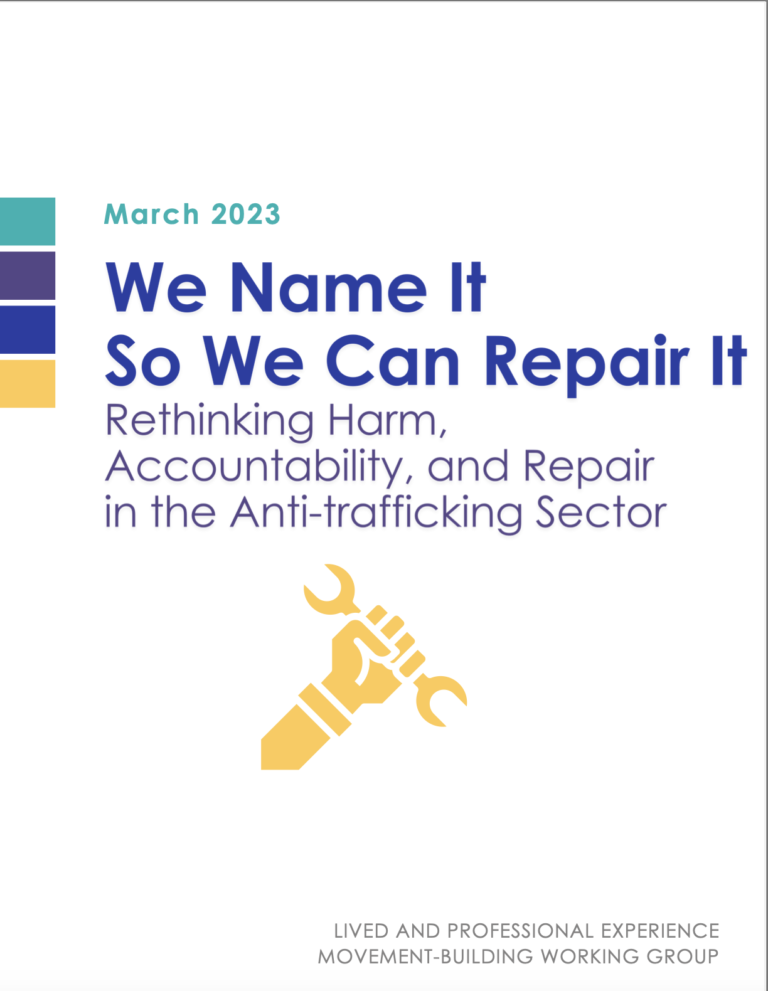In recent years, research and dialogue about best practices for incorporating survivor input into anti-trafficking programming and policies have come to the forefront of work to end human trafficking. Historically, the infrastructure of addressing any form of violence emerged out of the work of impacted people organizing to advocate for their needs.* For example:
Early work to eliminate sexual and partner violence emerged from the efforts of survivors finding ways to care for each other. It eventually formalized into nonprofits and government agencies that address sexual and partner violence.
Early work to end labor exploitation emerged out of worker organizing and the development of unions. This includes a variety of factory and trade workers, as well as farmworker organizing. The Department of Labor emerged in response to demands from the labor movement, which was led by impacted workers.

